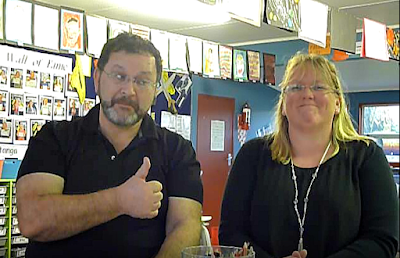Disruptive Technologies (* My Notes - Reflections)
"Disruptive technologies typically demonstrate a rapid rate of change in capabilities in terms of price / performance relative to substitutes and alternative approaches, or they experience breakthroughs that drive accelerated rates of change” (Manyika, et al. 2013).
"The more overdue a disruption is, the more sudden it is when it finally occurs, and the more off-guard the incumbents are caught"...“eliminating the bottom 99% of workers in [the teaching] professions” (Gade, 2014)
One of the world's largest...
- ...taxi companies owns no taxis (Uber)
- ...accommodation providers owns no real estate (AirBnB)
- ...phone companies owns no telecom infrastructure (Skype)
- ...retailers has no inventory (Alibaba)
- ...movie houses owns no cinemas or physical stores (Netflix)
- ...media companies owns no content (Facebook)
- ...software vendors doesn’t write the apps (Apple / Google)
(Amazon - demise of the book store. )
According to the Chartered Accountants Australia and New Zealand (2015), the number of New Zealand jobs at risk of automation in the next two decades is 885,000 (46%)
Reverse Time Capsule
What would you put into a reverse time capsule to send back 20 years? What current artifacts might surprise the citizens of 1997 the most?Share on your location’s Padlet:
The Reality Continuum
From Milgram, Takemura, Utsumi & Kishino (1994). Between the two extremes of the real environment and a completely virtual one, the continuum goes from overlaying reality with a few additional elements on the left, to the occasional introduction of real elements into a digital environment (e.g. the user’s hand) on the right
Virtual Reality
- Creates immersive, computer generated environments which replaces the real world
- The user is completely immersed in an artificial world and cut off from the real world
- Senses are mediated by the virtual world
Popular VR headsets include Oculus Rift and Google Cardboard. Google Expeditions, which you can use with Cardboard, is a virtual reality teaching tool that lets you lead or join immersive virtual trips all over the world — get up close with historical landmarks, dive underwater with sharks, even visit outer space! It was released free to the public on 27 June 2016 but is not totally free, especially for the whole class and with full features. Google Tilt Brush is another recent VR application that supports the creation of 3D virtual art.
Augmented Reality
Augmented reality overlays information on a view of the real world, rather like the Terminator's view of the world in the 1984 movie, but it is no longer science fiction. Unlike virtual reality headsets, which block out the real world, augmented reality headsets like the Microsoft HoloLens and Daqri Smart Helmet mix reality and virtual content together.
Augmented reality apps use various types of trigger to link views of the real world to virtual content. These might be 2D images, as in simple tools like Anatomy 4D, Elements 4D and Quiver, or they can be GPS locations, as in Zombie Run and Pokemon Go!
Aurasma Terminology
Trigger Image: The image recognized by the app, which launches the overlay. Images with high contrast and unique features are best. The app uses a ‘traffic light’ to tell you if an image will be a good trigger.
Overlay: An image or video linked to a trigger image
Aura: A combination of trigger image and overlay
Individual task with Aurasma
Create an ‘aura’ with your mobile device. There are some instructions on the portal if you find it hard to work out how to get going (Android and iOS versions are rather different)
- Create a video - 3 seconds talking about yourself
- Create a trigger image by drawing a detailed picture of your face
- Use the image to trigger the video
OR
If you are already an Aurasma expert, work with Blippar.
Where could you use AR? (Nesloney, 2013)
There are many approaches that can be used to bring learning to life through augmented reality:
- A Student Photo Wall: Set up a display of student photos in the classroom linked to a personal student videos about the individual student that can be shared with parents and visitors.
- Book Reviews: Have students record a video of themselves giving an review of a book. The trigger image to launch the video review could be the book cover, a picture of the student or an image they have drawn. Afterward, other students/teachers can scan the cover of the book and instantly access the review.
- Parent or Inspiring Role message: Source a recording from an inspirational speaker or record a message from a parent/friend of the student that provides words of encouragement to the student. Attach a trigger image to student desks or cover of their books.
- Year books/School magazines: Add an AR to printed school publications and include video profiles from sports events, school plays or award ceremonies as a rich memory of school activities.
- Word Definition Walls: Students can record themselves providing the definitions to different vocabulary words on a word wall.
- Lab Safety/Safety Messages: Put trigger images linked to safety videos around a science laboratory/workshop so that when students scan them, they can learn the different safety procedures and protocols within the learning environment.



No comments:
Post a Comment